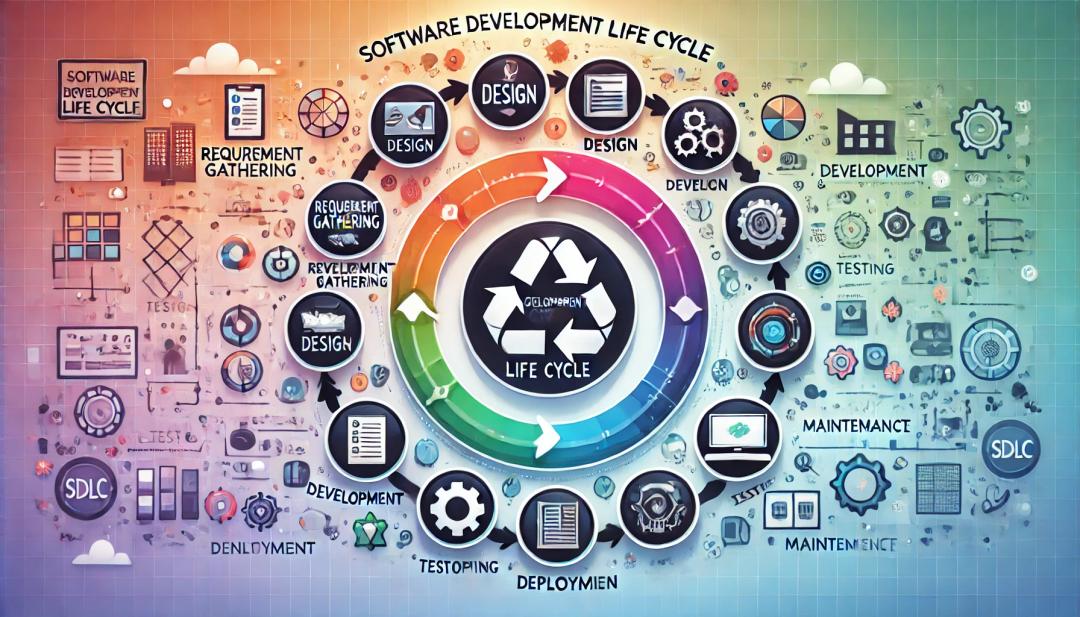Blog Details
The Magic of Words:
What Makes AI LLMs Tick?

Md. Fajle Rabbi Islam
28 Oct 2024
7 min read
Introduction
In today’s tech-driven world, I find Large Language Models (LLMs) to be one of the most exciting advancements in artificial intelligence. These models can generate text, answer questions, and even write poetry, making them seem almost magical. But what’s going on behind the scenes? In this blog, I want to explain how LLMs work, how they learn, their various applications, and the important ethical questions we should consider. This instructional material is for newbies so let's get started!
What Are Large Language Models?
At their core, LLMs are advanced computer programs that can understand and generate human language. They process vast amounts of text data to learn how language works, which allows them to produce responses that feel surprisingly human-like.
Why Are They Called “Large”?
The term "large" refers to the immense number of parameters these models have. Parameters are like settings that the model adjusts during training to learn how to generate text. The more parameters an LLM has, the better it can capture the nuances of language. For example, some LLMs have billions of parameters, giving them a broader understanding of different linguistic styles and meanings.

The Basics of How LLMs Work
At the heart of every LLM is a structure known as a neural network. These networks are designed to mimic how the human brain processes information. The specific type of neural network that powers many LLMs is called the Transformer. Let’s break down its key components.
1. Tokens: The Building Blocks of Language
LLMs start by breaking down text into smaller pieces called tokens. I like to think of tokens as the building blocks of language. They can represent:
- Whole Words: For example, “cat” is a token.
- Parts of Words: The word “unhappiness” might be split into “un,” “happi,” and “ness.”
- Single Characters: Sometimes, individual letters can be tokens.
By breaking text into tokens, the model can analyze and learn language at a more detailed level.
2. The Attention Mechanism: Understanding Context
One of the key innovations of the Transformer model is its attention mechanism. This allows the model to focus on relevant words when generating text. For instance, in the sentence “The cat sat on the mat,” the word “cat” is more important to “sat” than “the.” The attention mechanism helps the model grasp the meaning behind different words in context.
3. Training on Large Datasets: Learning from Examples
To learn how to generate text, LLMs are trained on massive datasets that include various sources:
- Books: Ranging from fiction to nonfiction, covering many genres.
- Articles: Including news stories and scientific papers.
- Websites: Content from across the internet, providing diverse perspectives and styles.
During training, the model reads this text and learns to predict the next word in a sentence based on the words that came before it. For example, if it sees the phrase “The sky is,” it might learn to predict that the next word is “blue.”
How LLMs Learn: The Training Process
The training process for LLMs is both fascinating and complex. Here’s how I understand it:
Initialization: The model starts with random parameters and doesn’t know anything about language yet.
Supervised Learning: The model is fed large amounts of text and learns to predict the next word in sentences. For every incorrect prediction, it slightly adjusts its parameters to improve accuracy. This process, called gradient descent, allows the model to minimize errors over time.
Iteration: The model goes through the training data multiple times, improving its understanding of language patterns, grammar, and context with each pass.
Fine-Tuning: After initial training, the model can be fine-tuned on specific datasets for specialized tasks. For example, if I fine-tune an LLM using medical literature, it will become better at generating health-related content.

Applications of LLMs: How They’re Used Today
I find it fascinating how LLMs are being applied in various fields, changing the way we work and interact. Here are some notable examples:
Content Creation: Writers and marketers use LLMs to generate articles, blog posts, and social media content. These models can help brainstorm ideas and draft entire pieces, saving time and enhancing creativity. They can also suggest headlines, optimize content for search engines, and adapt writing styles to suit different audiences, making the creative process more efficient.
Customer Support: Many businesses implement LLMs in chatbots and virtual assistants. This technology allows them to respond instantly to customer questions, improving user experience and streamlining support. LLMs can handle common inquiries, provide product recommendations, and even troubleshoot issues, freeing up human agents to focus on more complex problems. Some businesses are also using them for sentiment analysis to gauge customer satisfaction and adapt responses accordingly.
Language Translation: LLMs are becoming more effective at translating text between languages. Their deep understanding of context and nuances leads to more accurate translations, making communication easier globally. Beyond simple word-for-word translations, LLMs can consider idiomatic expressions and cultural references, resulting in translations that feel natural to native speakers. This capability is invaluable in international business and diplomacy.
Education: In educational settings, I see LLMs acting as virtual tutors. They provide personalized learning experiences, answering students’ questions in real-time and assisting with challenging topics. LLMs can generate practice quizzes, offer explanations tailored to individual learning styles, and even help with language learning by simulating conversational practice. Additionally, they can assist teachers by providing lesson plan suggestions and educational resources.
Creative Arts: LLMs are also being used to generate poetry, stories, and dialogue for video games and movies. This raises intriguing questions about creativity and the role of AI in the arts. Artists and writers can collaborate with LLMs to explore new ideas, refine their work, or even create entirely new narratives. In music, LLMs can generate lyrics or assist in composing melodies, pushing the boundaries of traditional creative processes.
Sentiment Analysis: LLMs excel at sentiment analysis, which involves determining the emotional tone behind a body of text. Businesses can use this technology to analyze customer feedback, reviews, and social media posts to understand public sentiment about their products or services. This information helps companies make data-driven decisions, address customer concerns, and improve their offerings.
Summarization and Classification: LLMs can effectively summarize lengthy documents, articles, or reports into concise summaries that capture the main points. This capability is particularly useful for busy professionals who need quick insights without reading everything in detail. Additionally, LLMs can classify text into predefined categories, helping organizations organize information efficiently, whether it’s for email sorting, content categorization, or legal document classification.
Machine Translation: Building on language translation, machine translation powered by LLMs offers real-time translation capabilities that improve communication across different languages. This technology is especially beneficial in global business settings, allowing teams from various countries to collaborate more effectively. By understanding context and idiomatic expressions, LLMs can deliver translations that resonate with native speakers, enhancing cross-cultural communication.
Personalized Recommendations: Many platforms use LLMs to enhance user experiences through personalized recommendations. By analyzing user preferences and behaviour, LLMs can suggest books, movies, or products tailored to individual tastes. This capability not only improves user engagement but also drives sales for businesses.
Healthcare: LLMs are making strides in the healthcare sector by assisting with medical documentation, summarizing patient records, and even providing preliminary diagnoses based on symptoms described in text form. They can help healthcare providers streamline workflows and improve patient care by offering evidence-based information and recommendations.
Legal Assistance: In the legal field, LLMs can help draft contracts, analyze case law, and summarize lengthy documents. They can assist lawyers in conducting research, making the process more efficient and allowing legal professionals to focus on strategy and client interaction. Some firms are even using LLMs to predict legal outcomes based on historical data.
Scientific Research: LLMs can assist researchers by analyzing vast amounts of scientific literature, summarizing findings, and suggesting relevant studies. They can help identify trends, generate hypotheses, and even assist in writing grant proposals, making the research process more efficient.
Gaming: In the gaming industry, LLMs can create dynamic narratives and dialogues, enhancing the player's experience. They can generate unique storylines based on player choices, making each gaming session feel distinct. This technology allows developers to create more immersive and engaging games.
Ethical Considerations: Important Issues to Address
As I explore the capabilities of LLMs, I also recognize the ethical implications of their use. Here are some key issues to consider:
- Bias in Training Data: LLMs learn from the data they are trained on, which may include societal biases. If these biases are not addressed, they can appear in the model's outputs, reinforcing stereotypes or misinformation. For example, if an LLM is trained on biased data about gender roles, it might generate text that reflects those biases.
- Misinformation Risks: Since LLMs can produce believable text, there is a risk they might generate false or misleading information. I believe it’s essential for users to be cautious about the accuracy of what these models produce, especially in critical areas like news and healthcare.
- Privacy Issues: The data used to train LLMs often comes from various sources, which can raise privacy concerns. I think it’s crucial to ensure that data is used ethically and responsibly, particularly when it involves personal information.
- Accountability: As LLMs create content, it can be challenging to determine who is responsible for any harmful or misleading outputs. Establishing clear guidelines for using AI responsibly is essential.
The Future of LLMs: What Lies Ahead?
The journey of LLMs is just beginning, and I’m excited to see where it leads. As AI research continues to advance, I expect even more sophisticated models capable of understanding and generating language with greater depth. Here are some potential future developments:
- Better Contextual Understanding: New models may become even better at grasping the full meaning behind words, leading to more meaningful conversations.
- Multilingual Skills: Future LLMs may seamlessly switch between languages, making them even more useful in diverse settings.
- Emotional Understanding: Incorporating emotional cues into language processing could help LLMs respond with empathy, making interactions feel more human-like.
Conclusion: The Power of Language
The magic of words, as demonstrated by AI LLMs, lies in their ability to connect human communication with machine understanding. By exploring how these models work, I can appreciate their potential while being mindful of their challenges.
As we navigate this intersection of language and technology, we stand on the brink of a new era where the possibilities are truly exciting. The real question is: how will we use the power of AI LLMs to create a better future? With thoughtful consideration and responsible usage, I believe we can harness this technology to enhance our lives and society. The answers will be as compelling as the words these models generate.
Trendingblogs
Get the best of our content straight to your inbox!
Don’t worry, we don’t spam!





